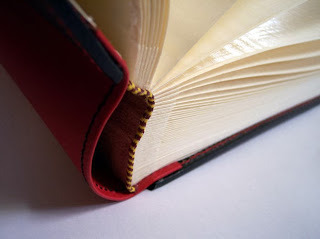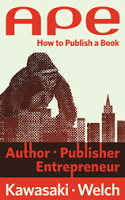Understanding Book Distribution Part 4: Print-On-Demand
 Years ago he got a Groupon coupon from CreateSpace to publish a book, so he took his collection of photos of Windsor and printed a local-history book called Windsor Then. A local paper ran a story about the book, and he ended up selling 3,000 copies. He still uses CreateSpace as his print-on-demand supplier—as opposed to an author-services company—and orders 300 copies at a time.
Years ago he got a Groupon coupon from CreateSpace to publish a book, so he took his collection of photos of Windsor and printed a local-history book called Windsor Then. A local paper ran a story about the book, and he ended up selling 3,000 copies. He still uses CreateSpace as his print-on-demand supplier—as opposed to an author-services company—and orders 300 copies at a time.You can use an author-services company as a print-on-demand supplier or a pure-play printer such as Lightning Source so that you don’t end up with boxes of books sitting around unsold if you overestimate demand. Both these types of companies work on short lead times so that you can order books “on demand”—that is, when you need them.Many bookstores will not sell self-published books. Author-services companies may tell you that they can get you brick-and-mortar distribution, but they are shading the truth. Bookstores can order your book from them if someone requests it, but this doesn't mean they will buy your book for inventory.
Pros:
· Reaches people who prefer printed books. Despite the oversimplifications and misinterpretations, remember that ebooks are still only 10 percent of total book sales in the United States. The only way you can try to reach the other 90 percent is to offer your book in a printed format.
· Psychic satisfaction. One of the pleasures of writing a book is seeing it for sale on a bookstore shelf—preferably face-out in the “new and noteworthy” section. Offering your book in a printed format is the only way to achieve this.
· Control of final form. Working directly with a printer provides you with more design and format options. It also gives you the freedom to do special editions for appearances and signings.
· Higher margins. Selling a printed book directly to customers has some of the highest margins in the publishing business. The flip side of selling direct, though, is that there are the costs of order processing, fulfillment, and inventory.
Cons:
· Complexity.This path involves more work than using author-services companies. Printers only take print-ready PDFs of your cover and manuscript. They also do not provide any handholding, assuming that an experienced production person is managing the process.
· Commitment to accept returns. You don’t have to order thousands of copies of inventory, but customers and bookstores can return printed books for refunds. We’ve never heard of having to accept an ebook return.
· Sales-tax reporting. You will probably have to collect and pay state sales tax for books sold directly to readers in your state of residence, although you won’t be responsible for books sold at a wholesale price to resellers.
Guy Kawasaki has written 12 books, 10 of which were traditionally published. His newest book is APE: Author, Publisher, Entrepreneur - How to Publish a Book, which helps people understand how and why to self-publish.

APE: Author, Publisher, Entrepreneur - How to Publish a Book, by Guy Kawasaki and Shawn Welch, is available as an eBook ($9.99) and in paperback ($24.99). Visit http://apethebook.com/








Published on December 08, 2013 19:26
No comments have been added yet.



